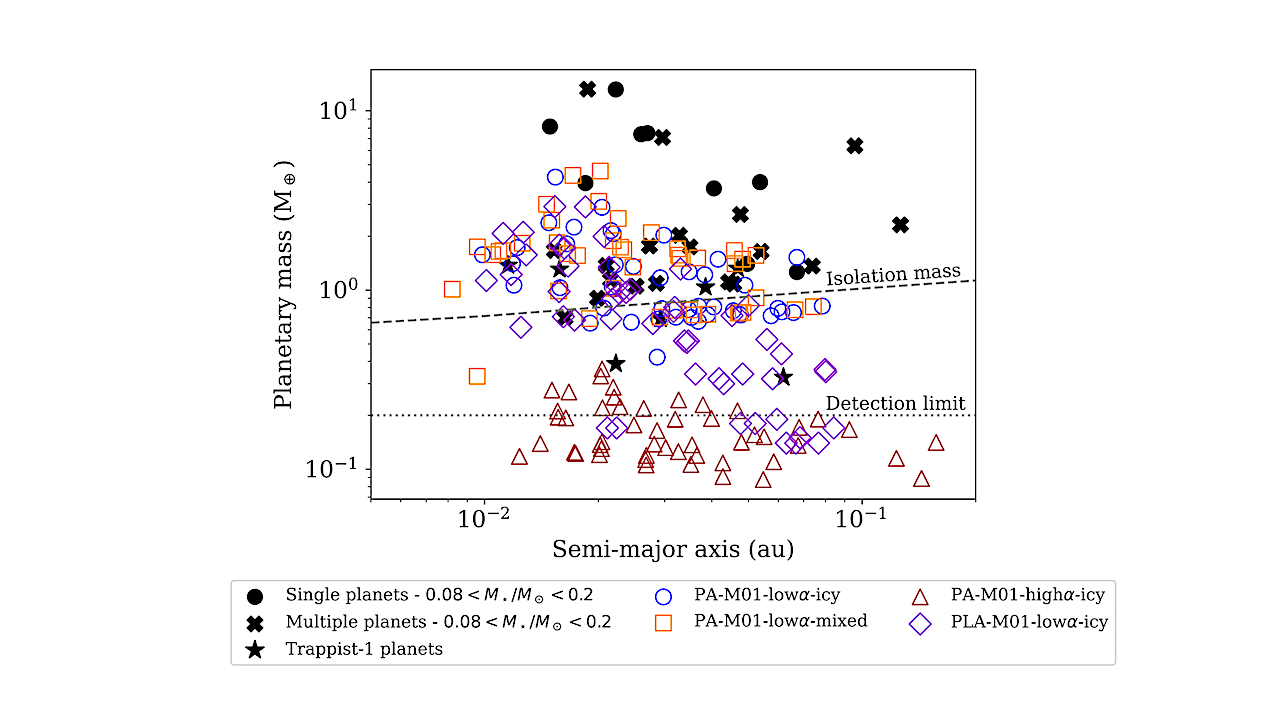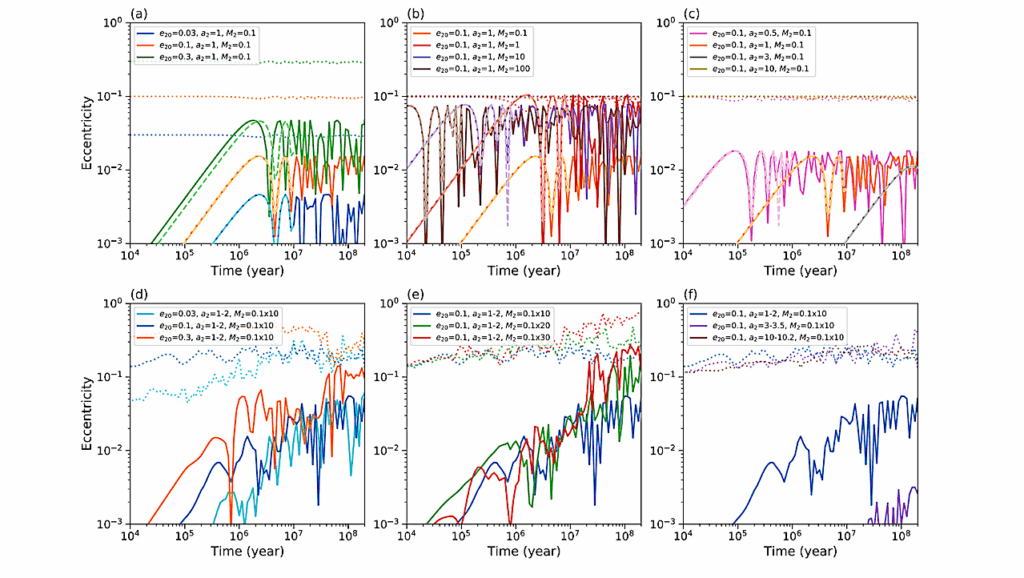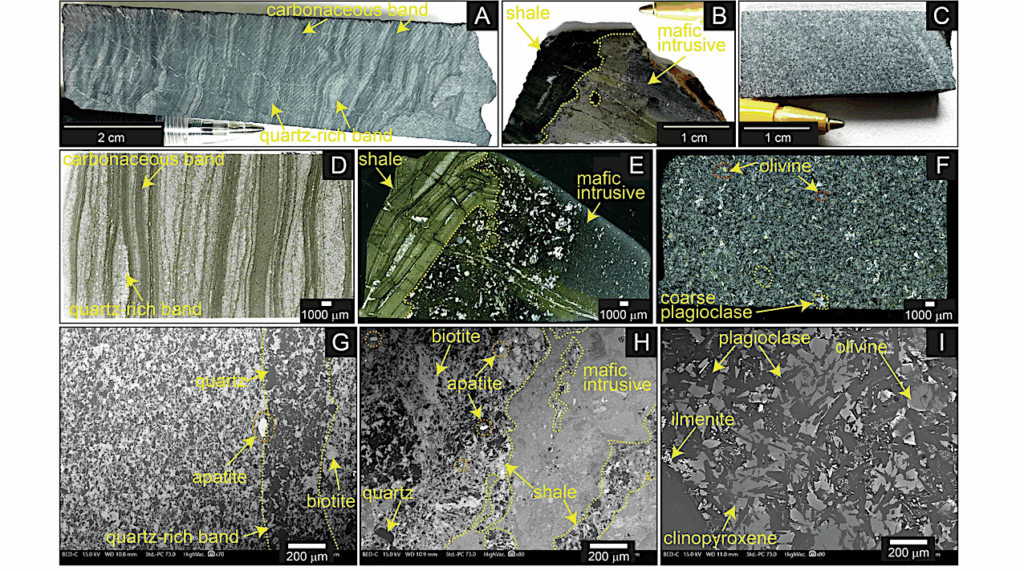Rocky Planet Formation In Compact Disks Around M Dwarfs

Rocky planets in compact configurations are the most common ones around M dwarfs. Many disks around very low mass stars (between 0.1 and 0.5 M⊙) are rather compact and small (without observable substructures and radius less than 20 au), which favours the idea of an efficient radial drift that could enhance planet formation in compact orbits.
We aim to investigate the potential formation paths of the observed close-in rocky exoplanet population around M dwarfs, assuming that planet formation could take place in compact disks with an efficient dust radial drift. We developed N-body simulations that include a sample of embryos growing by pebble accretion exposed to planet-disk interactions, star-planet tidal interactions and general relativistic corrections. For a star of 0.1 M⊙ we considered different gas disk viscosity and initial embryo distributions. We also explore planet formation by pebble accretion around stars of 0.3 and 0.5 M⊙.
Lastly, for each stellar mass, we run simulations that include a sample of embryos growing by planetesimal accretion. Our main result is that the sample of simulated planets that grow by pebble accretion in a gas disk with low viscosity (α=10−4) can reproduce the close-in low-mass exoplanet population around M dwarfs in terms of multiplicity, masses and semi-major axis. Furthermore, we found that a gas disk with high viscosity (α=10−3) can not reproduce the observed planet masses.
Also, we show that planetesimal accretion favours the formation of smaller planets than the ones formed by pebble accretion. Rocky planet formation around M dwarfs can take place in compact and small dust disks driven by an efficient radial drift in a gas disk with low viscosity. This result points towards a new approach in the direction of the disk conditions needed for rocky planet formation around very low mass stars.

Left: graphic overview of the disks in each formation scenario with embryos of different masses (the biggest circles) and pebbles (the smallest circles) or planetesimals (medium circles) located either inside (brown) or outside (blue) the H2O snowline in a gas disk with low viscosity (curved black arrows) or high viscosity (spiral black arrows). Right: final simulated planets in each scenario scaling by mass: < 0.5M⊕ (violet circles), 0.5 < M/M⊕ < 1 (blue circles), 1 < M/M⊕ < 2 (red circles), 2 < M/M⊕ < 5 (green circles), 5 < M/M⊕ < 10 (yellow circles) and 10 < M/M⊕ < 20 (black circles). The percentage of simulations in which planets in each mass range were formed is given below the circles. — astro-ph.EP
M. Sanchez, N. van der Marel, M. Lambrechts, G. D. Mulders, O. M. Guerra-Alvarado
Comments: Revision after first referee report in A&A
Subjects: Earth and Planetary Astrophysics (astro-ph.EP)
Cite as: arXiv:2406.07760 [astro-ph.EP] (or arXiv:2406.07760v1 [astro-ph.EP] for this version)
Submission history
From: Mariana Belen Sanchez Miss
[v1] Tue, 11 Jun 2024 22:51:53 UTC (1,060 KB)
https://arxiv.org/abs/2406.07760
Astrobiology








